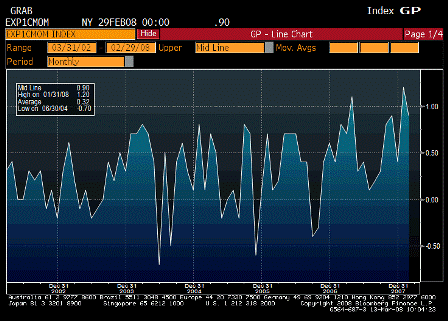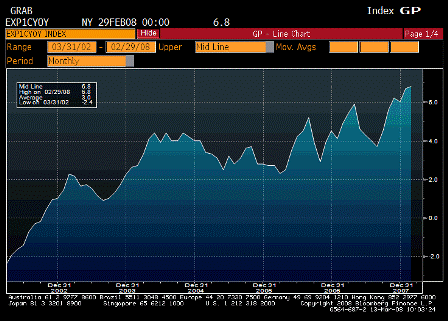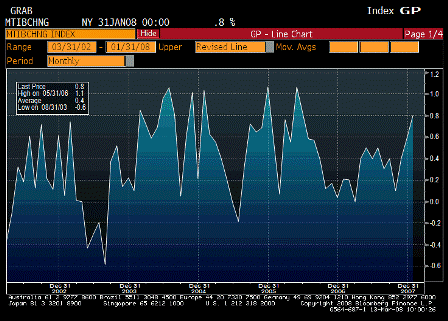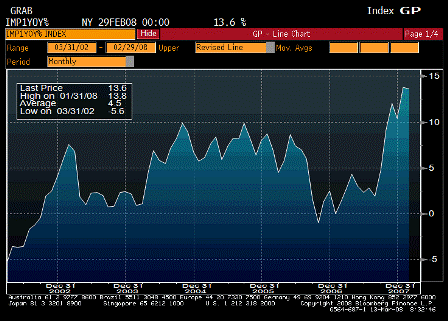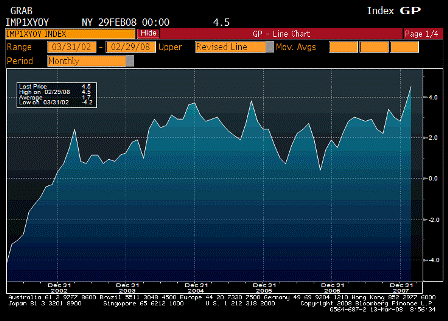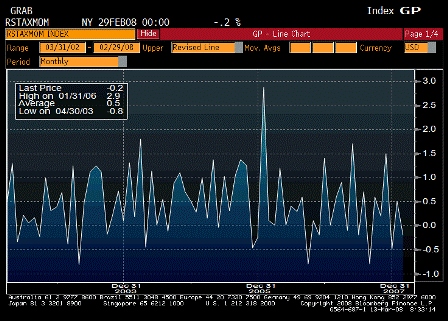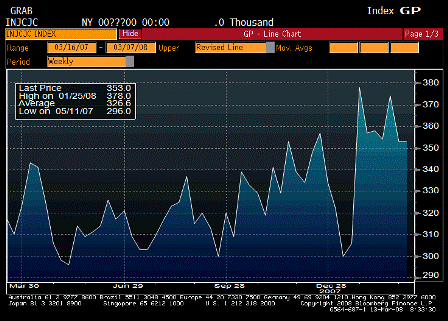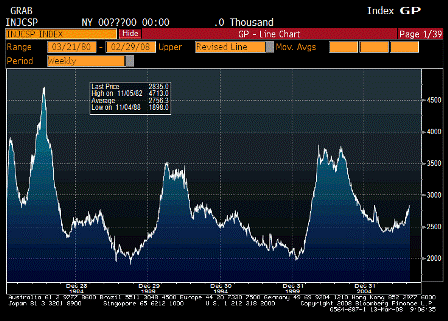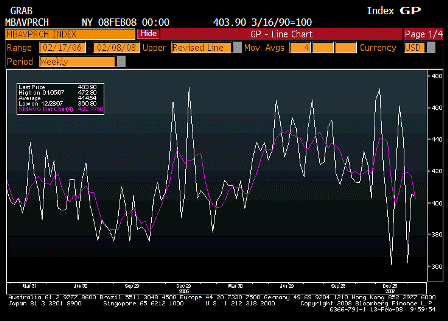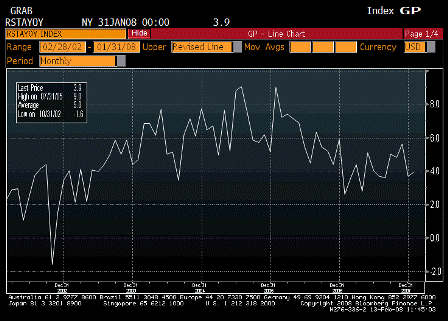Consensus was high enough, let’s see how tomorrow turns out.
Also retail sales up a lot more than just energy prices, and claims down.
Still no sign yet of aggregate demand breaking down
Lehman earnings higher than estimates
November Inflation Surged; Retail Sales Also Strong
Inflation at the wholesale level was stronger than expected in November, thanks to higher gasoline prices, but retail sales also exceeded expectations as holiday shoppers coped with higher energy costs and the fallout from the housing slump.
U.S. producer prices surged at a 34-year high rate of 3.2 percent in November on a record rise in gasoline prices, the Labor Department said.
Excluding food and energy prices, the producer price index rose an unexpectedly large 0.4 percent, the heftiest gain since February, the report showed. When cars and light trucks also were stripped out, core producer prices rose 0.1 percent.
Autos had been lagging if I recall correctly, so was this overdue?
The rise in prices paid at the farm and factory gate was the largest since August 1973 and was well ahead of analysts’ expectations of a 1.5 percent gain. Analysts polled by Reuters had forecast core prices to rise 0.2 percent.
The 7.2 percent increase in producer prices from November 2006 was the largest 12-month gain since November 1981.
Gasoline prices rose 34.8 percent in the month, eclipsing the previous record gain of 28.8 percent in April 1999. Prices for all energy goods also rose by a record 14.1 percent, surpassing the previous high of 13.4 percent recorded in January 1990.
Sales at U.S. retailers posted a much stronger-than-expected 1.2 percent rise in November, government data showed as holiday shoppers coped with high energy costs and the fallout from a housing slump.
Excluding autos, retail sales gained 1.8 percent, the Commerce Department said.
Surprising on the upside.
Economists polled by Reuters forecast retail sales to rise 0.6 percent while sales ex autos were also projected to increase by 0.6 percent.
However, part of the increase was fueled by mounting energy prices, with gasoline sales spurting 6.8 percent higher in November, which was the largest monthly gain since September 2005 in the wake of Hurricane Katrina.
Still, sales excluding gasoline and autos gained 1.1 percent in November after growing just 0.1 percent in the previous month.
First-time claims for U.S. unemployment benefits eased by a slightly more-than-expected 7,000 last week, a Labor Department report showed.
New applications for state unemployment insurance benefits fell to a seasonally adjusted 333,000 in the week ended Dec. 8 from an upwardly revised 340,000 the week before. Analysts polled by Reuters were expecting claims to ease to 335,000 from the previously reported 338,000.
This means the fed still sees no slack in the labor markets.
The four-week moving average of new claims, which smooths out week-to-week fluctuations, fell slightly to 338,750 from a revised 340,750 the prior week.
The number of people continuing to receive jobless benefits after an initial week of aid rose to 2.64 million in the week ended Dec. 1, the most recent week for which statistics are available. Analysts had forecast claims would hold steady at 2.60 million.
The four-week moving average of continued claims rose to 2.61 million, the highest level since the week ended Jan. 7, 2006.
Not good, but not anywhere near bad enough to offset the other numbers reported.
Yesterdays is up 0.9% export number adding to US income and aggregate demand supporting retail sales as well.
Inflation per se is good for nominal equity prices, while the fed fighting inflation with higher rates hurts valuations.
A perceived stronger than expected economy and diminished odds of future rate cuts also likely to shift portfolio allocations back toward the $.
♥
